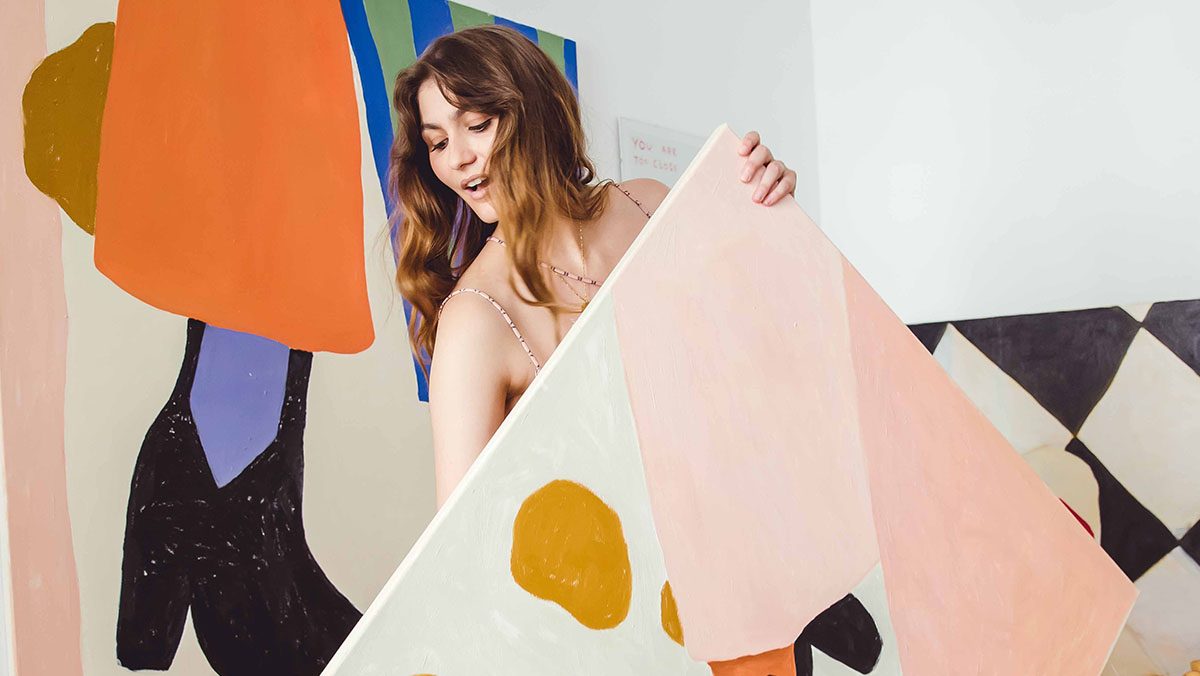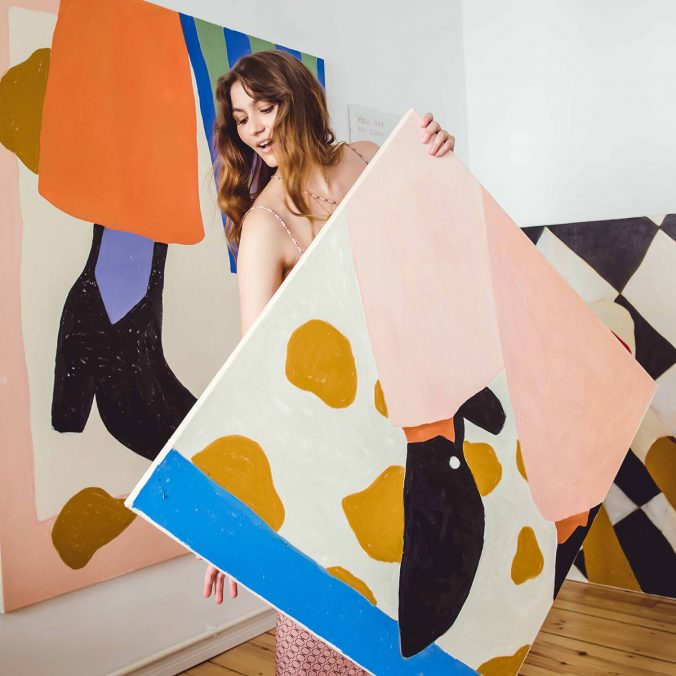
Woher nimmst du deine Inspiration?
Seit ich denken kann, habe ich mich immer schon kreativ ausgedrückt. Damals waren mir Einflüsse und Inspirationen natürlich noch nicht so bewusst — heute dafür umso mehr. Ich lasse mich gerne von Bewegtbildern, Fotografien oder Erinnerungen inspirieren. Als kreativer Mensch habe ich ständig Ideen, sehe Farben oder Formen die ich spannend finde oder speichere Bilder von ungewöhnlichen Kompositionen ab. Das kann schon mal überfordern, aber im Grunde liebe ich diese permanente Reizüberflutung und die Ideen, die mir auch abends durch den Kopf gehen, wenn ich im Bett liege. Ich bin durch und durch Romantikerin und Träumerin. Meine Inspiration atmet häufig die amerikanischen Popkultur und wird von den Filmen meiner Kindheit angeschoben. Ich stelle gerne Dinge in Kontrast, die auf den ersten Blick nichts miteinander zu tun haben. So ist zum Beispiel meine „Balls & Fruit“ Serie entstanden, in der ich Sportbälle und Schläger mit Früchten kombiniert habe.
Eine weitere Quelle ist meine Liebe zu Interieur, zu Design und Geschichte — dabei sind meine Kompositionen nie Stillleben, sondern personifizierte Objekte. In meiner Stuhl Serie konnte ich mich so richtig austoben, wobei sicher keiner dieser Stühle so jemals existieren oder funktionieren könnte.
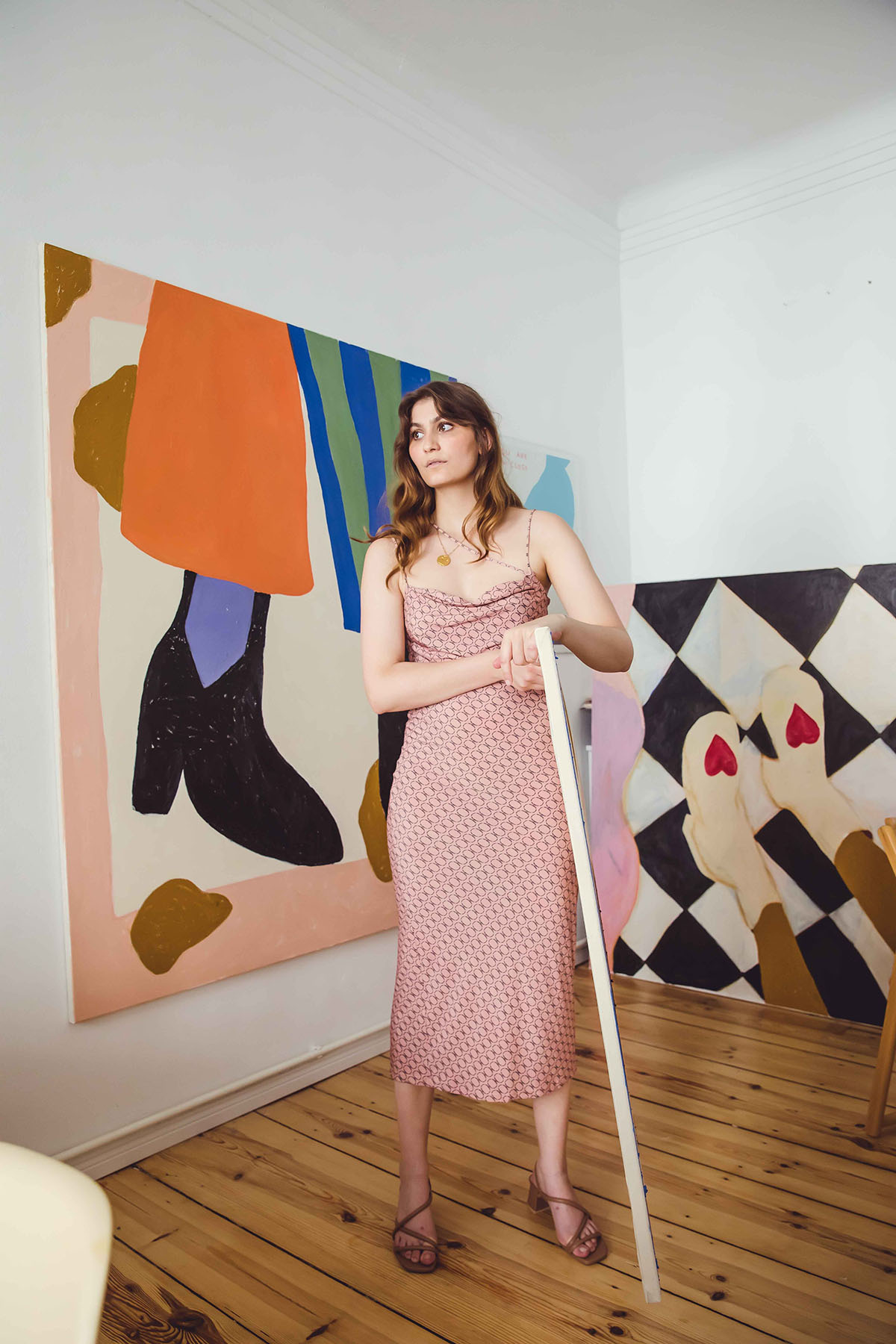
Wie würdest du deine Bilder beschreiben?
Andersherum: Ich denke, meine Bilder beschreiben meine Gefühle und meinen Charakter! In meinem Beruf als PR Consultant bin ich gezwungen mich ständig mit dem aktuellen Zeitgeist und Trends auseinander zu setzen. Mein Herz schlägt allerdings vor allem für Vergangenes. Nostalgische Träume von den 60ern, 70ern und auch zum Teil 80ern, alten Filmen und generell dem Fantasievollen. All das spiegelt sich zwangsläufig in meinen Werken wieder. Aktuelle Design-Klassiker wie Schachbrettmuster baue ich zum Beispiel seit einigen Jahren immer wieder ein, da sie mich sofort in vergangene Jahrzehnte versetzen und meinen Werke eine räumliche Grundstruktur geben. Meine Kunst muss nicht hinterfragen, oder den Finger heben. Ich freue mich, wenn Menschen über meine Kompositionen schmunzeln, an etwas erinnert oder selbst inspiriert werden. Diese Gefühle versuche ich auch in wiederkehrenden Symbolen einfließen zu lassen, wie etwa den Zitronen, Baseball-Bällen oder Stühlen. Wenn man meine Kunst verfolgt, merkt man schnell, dass ich dieselben Situationen häufig wiederaufnehme und immer wieder anders darstelle.
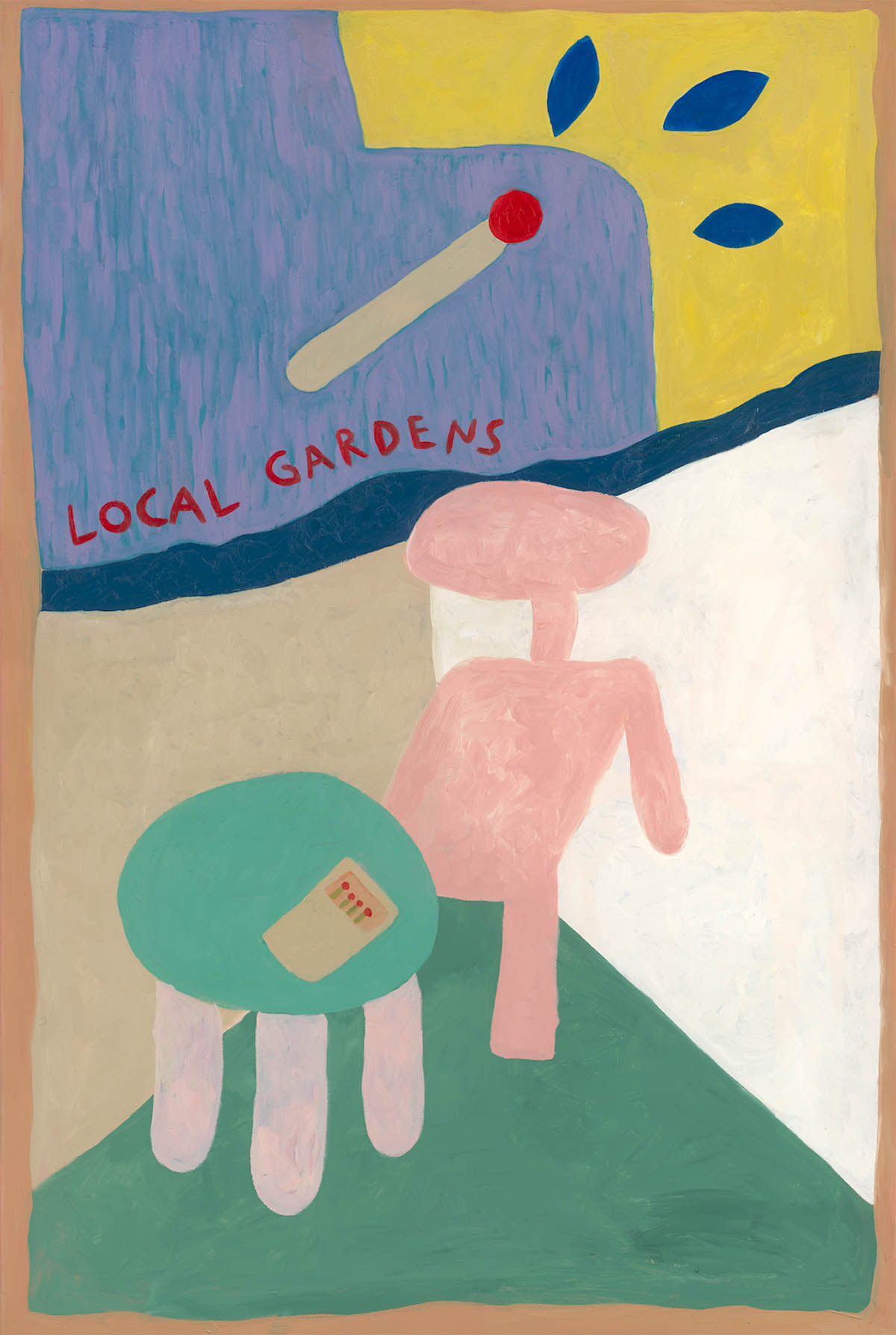
Local gardens – E.T. Chair 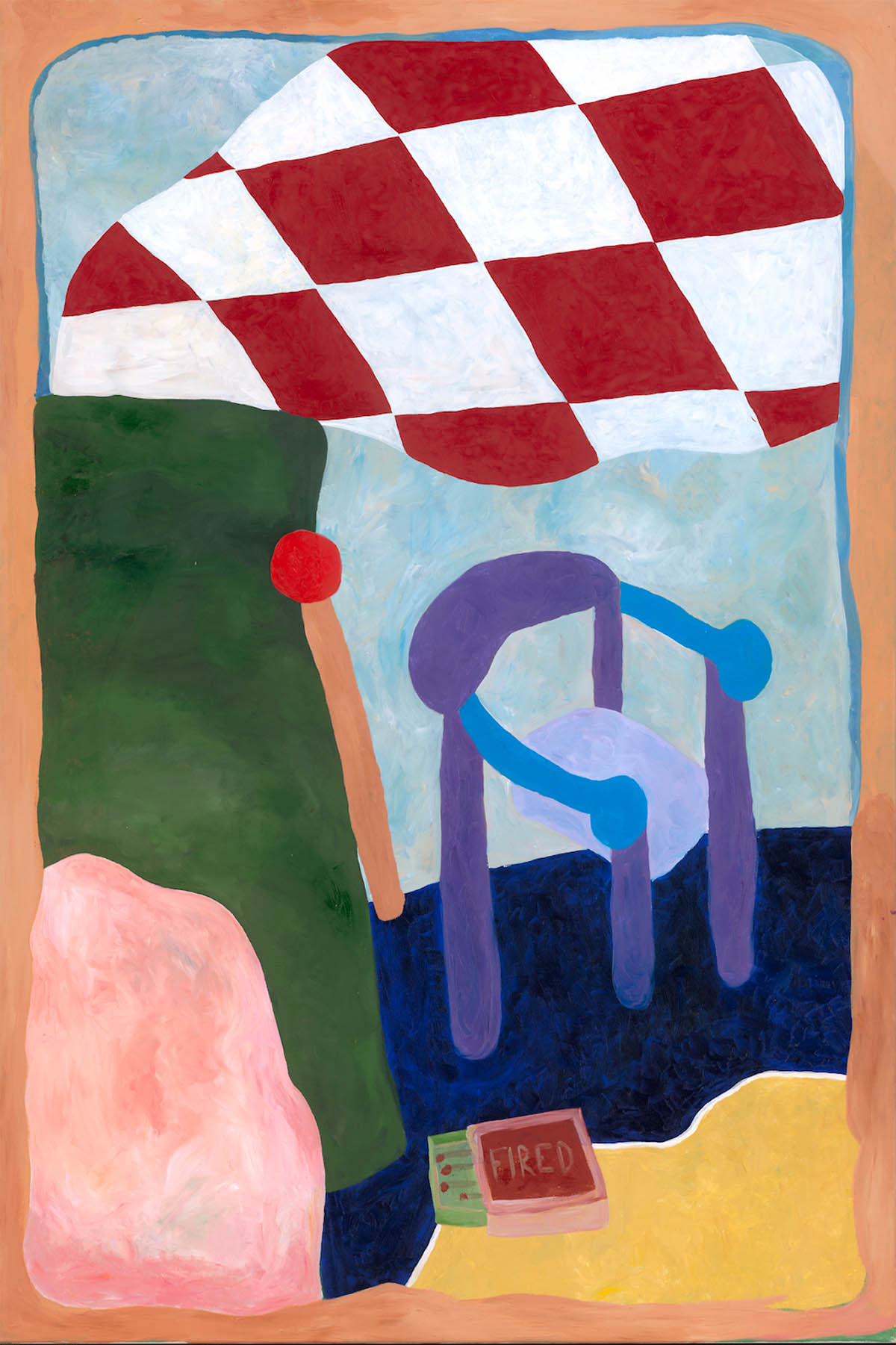
Local gardens – Fired 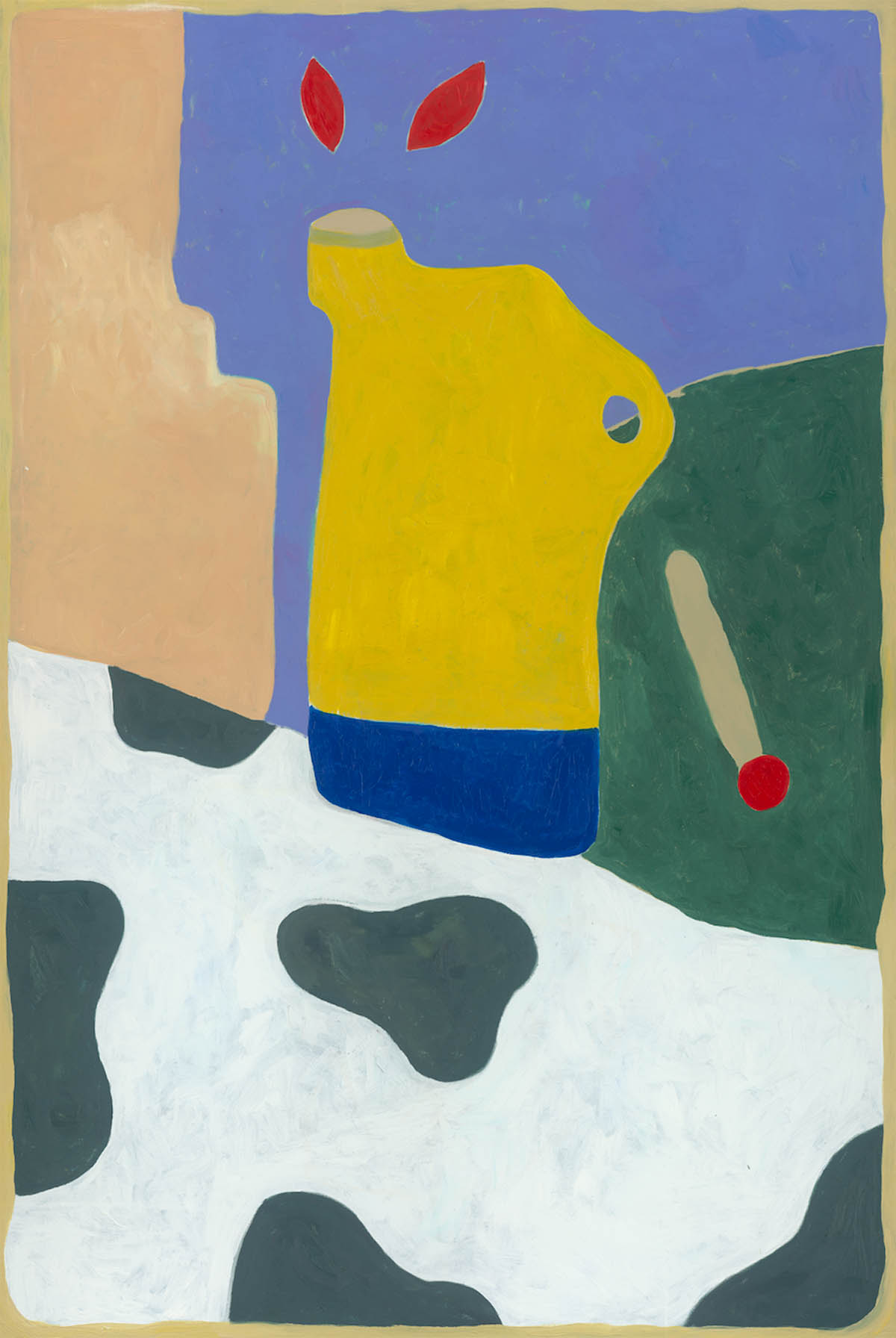
Local gardens – Milk my vase
Wo entstehen sie?
Ab nächster Woche endlich in meinem wunderschönen Atelier, im Herzen von Kreuzberg. Ich habe mich zwei Jahre lang darüber beklagt, zu wenig Platz in der Wohnung zu haben, in der ich auch meine großformatigen Werke male. Und ganz objektiv gesehen, war hier auch viel zu wenig Platz — trotzdem habe ich es auch geliebt abends einen kleinen Hürdenlauf veranstalten zu müssen, um zum Sofa zu kommen. Zu viele zum Trocknen ausgelegte Ölgemälde und Papier-Studien wirken wie ein Hindernisparcours. Auf den nächsten Schritt freue ich mich aber sehr, vor allem da ich gerne mehr Menschen zu Atelier Besuchen einladen, und kleine Events veranstalten möchte (sobald dies wieder möglich ist).
Was ist dir im Leben wichtig?
Ich bin durch und durch eine Träumerin und ich liebe Dinge die besonders sind, weil sie ungewöhnlich erscheinen. Im letzten Jahr habe ich gelernt, diese Momente auch ohne große Reisen oder Events zu erkennen und zu genießen. Ein sehr bewusstes Leben ist mir daher besonders wichtig — das habe ich auch gerade in der Selbstständigkeit gemerkt. Dabei folge ich immer dem Motto: be brave and kind.
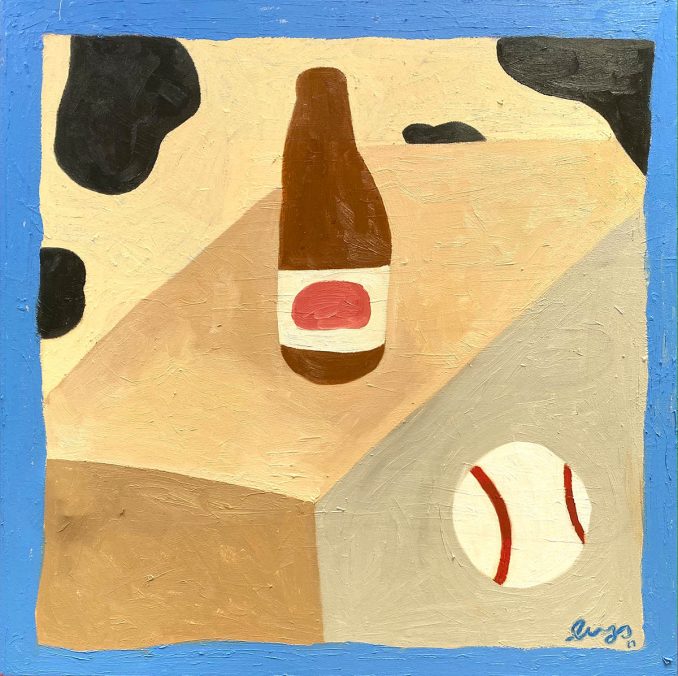
The game 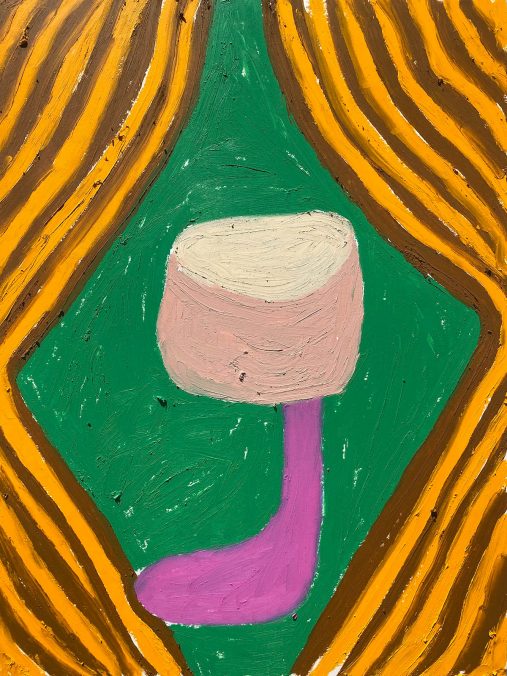
Wobbly glass
Woran arbeitest du derzeit?
Ein Ohrwurm, den ich einfach nicht mehr losgeworden bin, war die Inspiration für meine neue Serie „Do a little dance“. Es ist eine ganze Weile her, dass ich zum letzten Mal tanzen war – und ich vermisse es sehr. Do a little dance – make a little love – get down tonight wird eine Serie von großformatigen Werken und Arbeiten auf Papier, die sich alle rund um das Thema Bewegung, Liebe und das Gefühl von Freiheit drehen. Als Setting natürlich die 70/80er!
Und wann kommst du nach Wien?
Ich war tatsächlich noch nie in Wien und es steht ganz oben auf meiner Liste! Seit kurzem bin ich auch in der Wiener Galerie Kunst ab Hinterhof vertreten – war dort Teil der Gruppenausstellung „20€ Flixbus“. Das Projekt Atelier nimmt gerade recht viel Zeit in Anspruch, aber sobald sich alles entspannt und das Reisen wieder einfacher ist, würde ich liebend gerne Wien besuchen.
Bings – www.instagram.com/bbbingss/




